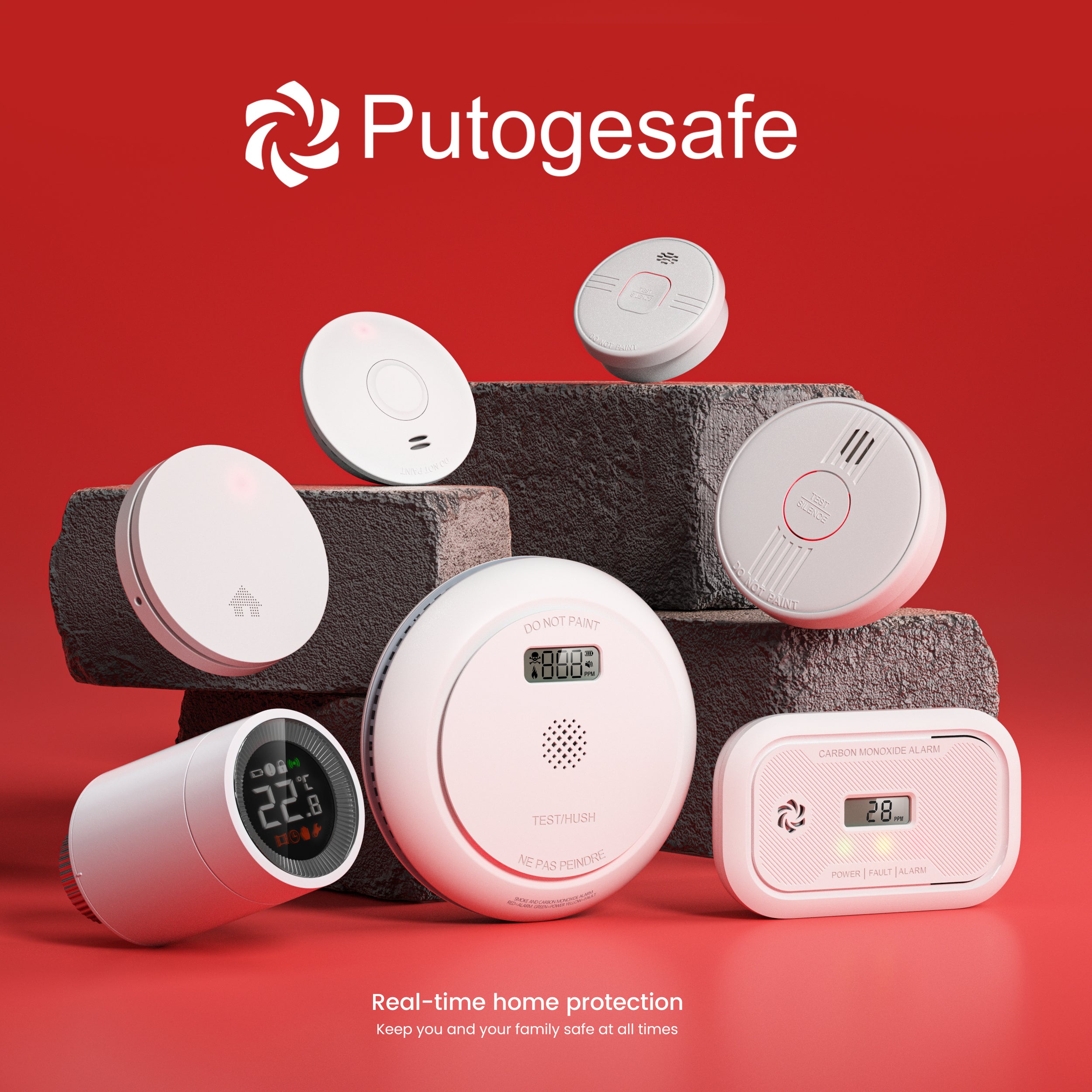Where to Place Carbon Monoxide Detectors?
CO gas is lighter than air, meaning it can rise. It also tends to be found in warm spaces, which further encourages it to rise, so carbon monoxide detectors should always be placed up to five feet off the ground. If you’re unsure, simply attach it to the ceiling as you would a smoke detector.
CO alarms installation best practices:
|
Place CO alarms in home |
At least 5 foot off the ground. Attached to the ceiling or a wall. Prioritize the kitchen and sleeping areas. |
|
Place CO alarms in basement |
3-5 meters from flammable/gas producing appliances and objects, like BBQs, heaters, and cars in storage. |
|
Place CO alarms in bedroom |
Close enough to sleeping areas for the alarm to wake up occupants in the night. If placed in the hallway or corridor, test loudness of alarm from each bedroom. |
|
Place CO alarms in kitchen |
3-5 meters from flammable/gas producing appliances and objects, like gas ovens and boilers (the most likely place for CO leaks to occur). |
|
Place CO alarms in office |
Prioritize office kitchenettes. Always use professional installation and annual servicing. Ensure employees have undergone relevant health and safety training regarding CO poisoning and what to do in the event of an alarm. |
How to Install a Carbon Monoxide Detector:
While specific installation may vary product by product, the good news is that installing a carbon monoxide detector is generally an easy task. Always consult the product manual before attempting installation if you have it. If not, here’s how to install a wall-mounted detector.
- Use a tape measure to measure 3-5 feet away from gas-producing appliances (namely, gas ovens and boilers). If this isn’t possible in your property, simply find the place in the room furthest from these appliances.
- Measure vertically at least 5 feet off the ground (eye level). CO rises, so it is essential that the monitor doesn’t sit far below this threshold.
- Measure horizontally to find the most appropriate place on the wall.
- Many detectors include a mounting guide (a piece of paper you can use to mark the screw holes). Tape this to the wall, using a leveler to make sure it is straight, and use it to drill accurate holes. If there isn’t one included, simply measure the distance between the screws on the back of the device and mark this on the wall with a pencil.
- Insert wall anchors into the holes. If you are drilling into wood, you can screw directly into the holes. Wall anchors can help maintain the integrity of the wall.
- Tighten the screws into either the anchors or the wall, leaving a gap of about one millimeter for the device to hang off.
- Slide the device over the screws, using a leveler to ensure it is straight.
- Test the detector by touching the large button on the front. It should beep. If not, try changing the battery.
From Putogesafe Official
